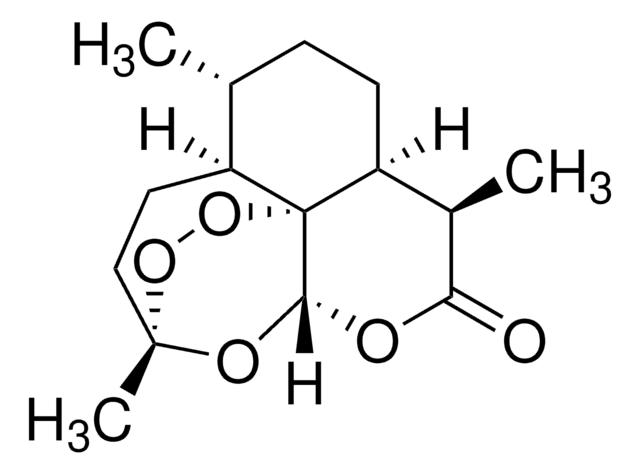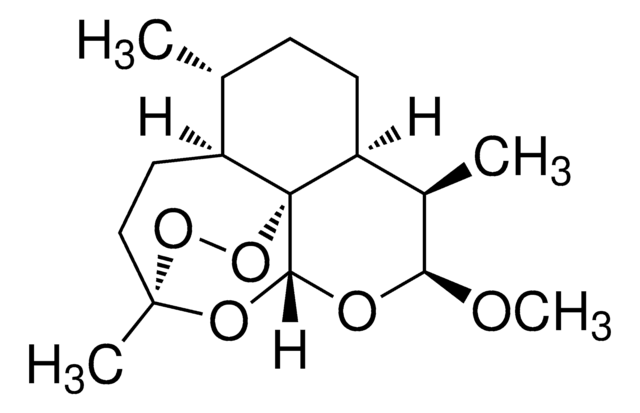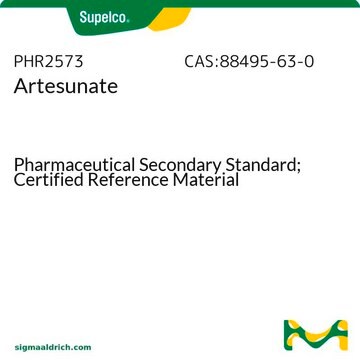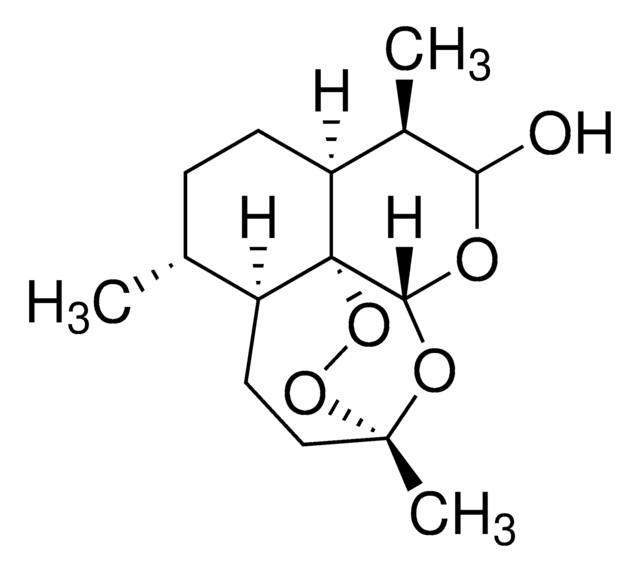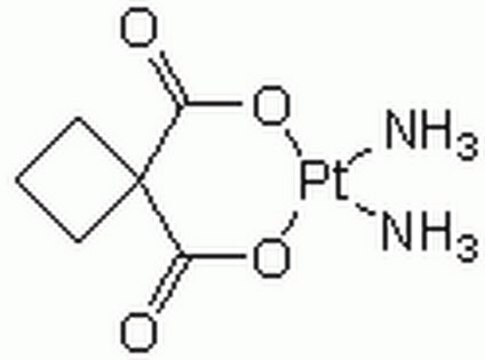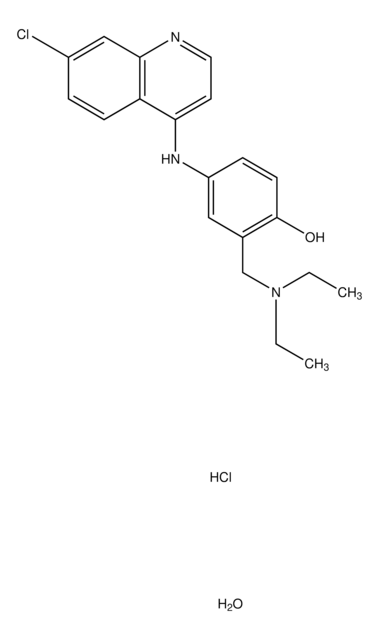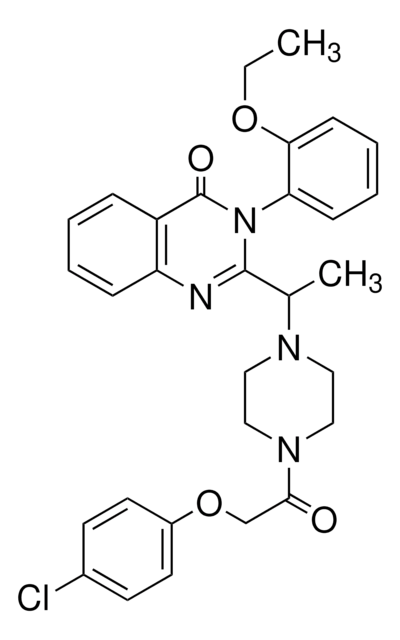A3731
Artesunat
from Artemisia annua
Synonym(e):
Artesunic acid, dihydroartemisinine-12-alpha-succinate, succinyl dihydroartemisinin
About This Item
Empfohlene Produkte
Biologische Quelle
Artemisia annua
Form
crystalline powder
Farbe
white to off-white
Löslichkeit
acetone: 33.4 mg/mL
Wirkungsspektrum von Antibiotika
neoplastics
parasites
Wirkungsweise
protein synthesis | interferes
Lagertemp.
room temp
InChI
1S/C19H28O8/c1-10-4-5-13-11(2)16(23-15(22)7-6-14(20)21)24-17-19(13)12(10)8-9-18(3,25-17)26-27-19/h10-13,16-17H,4-9H2,1-3H3,(H,20,21)/t10-,11-,12+,13+,16+,17-,18?,19-/m1/s1
InChIKey
FIHJKUPKCHIPAT-JQXDXKTESA-N
Suchen Sie nach ähnlichen Produkten? Aufrufen Leitfaden zum Produktvergleich
Allgemeine Beschreibung
Anwendung
- Unrevealing the therapeutic potential of artesunate against emerging zoonotic Babesia microti infection in the murine model.: This study explores the efficacy of artesunate in treating Babesia microti infection, a zoonotic disease, in mice. The findings suggest that artesunate significantly reduces parasitemia, indicating its potential as a therapeutic agent for zoonotic infections (Fazilani et al., 2024).
- Antitumour effects of artesunate via cell cycle checkpoint controls in human oesophageal squamous carcinoma cells.: The study investigates artesunate′s antitumor properties in oesophageal squamous carcinoma cells, highlighting its ability to regulate cell cycle checkpoints and inhibit cancer cell proliferation. These findings underscore artesunate′s potential in cancer therapy (Mao et al., 2024).
- 3D printing of multi-unit gastro-retentive tablets for the pulsatile release of artesunate.: This study presents a novel approach to drug delivery using 3D-printed gastro-retentive tablets for the pulsatile release of artesunate. The technology promises improved bioavailability and therapeutic efficacy of artesunate for various medical conditions (Yan et al., 2024).
Biochem./physiol. Wirkung
Sonstige Hinweise
Signalwort
Warning
H-Sätze
Gefahreneinstufungen
Acute Tox. 4 Dermal - Acute Tox. 4 Inhalation - Acute Tox. 4 Oral
Lagerklassenschlüssel
13 - Non Combustible Solids
WGK
WGK 3
Flammpunkt (°F)
Not applicable
Flammpunkt (°C)
Not applicable
Persönliche Schutzausrüstung
dust mask type N95 (US), Eyeshields, Gloves
Analysenzertifikate (COA)
Suchen Sie nach Analysenzertifikate (COA), indem Sie die Lot-/Chargennummer des Produkts eingeben. Lot- und Chargennummern sind auf dem Produktetikett hinter den Wörtern ‘Lot’ oder ‘Batch’ (Lot oder Charge) zu finden.
Besitzen Sie dieses Produkt bereits?
In der Dokumentenbibliothek finden Sie die Dokumentation zu den Produkten, die Sie kürzlich erworben haben.
Kunden haben sich ebenfalls angesehen
Unser Team von Wissenschaftlern verfügt über Erfahrung in allen Forschungsbereichen einschließlich Life Science, Materialwissenschaften, chemischer Synthese, Chromatographie, Analytik und vielen mehr..
Setzen Sie sich mit dem technischen Dienst in Verbindung.